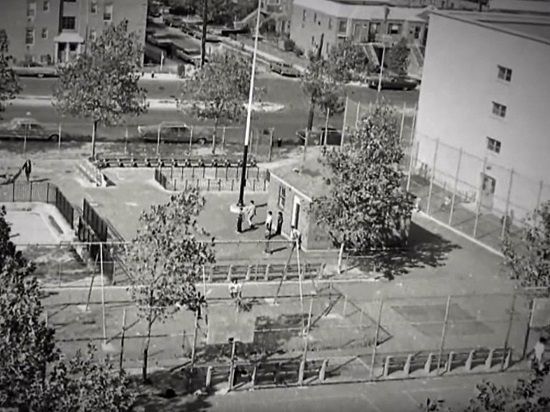Against all odds - The rags-to-riches story of Starbucks billionaire Howard Schultz.
Starbucks Chairman and CEO Howard Schultz says he drinks four to five cups of coffee a day.
Thirty years ago, Howard Schultz got into the coffee business with one goal in mind: to enhance the personal relationship between people and their coffee.
He's now responsible for Starbucks, one of the world's most beloved brands, and worth at least $3 billion as chairman and CEO of the Fortune 500 Company. But it wasn't an easy path to the top.
How did Schultz, who came from a "working poor" family in the Brooklyn projects, overcome adversity and grow a quaint Seattle coffeehouse into the largest coffee chain on Earth?
Schultz was born on July 19, 1953, in Brooklyn, New York. In an interview with Bloomberg, he said growing up in the project exposed him to the world's wealth disparity.
He experienced poverty at an early age. When Schultz was 7 years old, his father broke his ankle while working as a truck driver picking up and delivering diapers. At the time, his father had no health insurance or worker's compensation, and the family was left with no income.

In high school, Schultz played football and earned an athletic scholarship to Northern Michigan University. By the time Schultz started college, he decided he wasn't going to play football after all. To pay for school, he took out student loans and worked at various jobs, including working as a bartender and even occasionally selling his blood.
After graduation in 1975, Schultz spent a year working at a ski lodge in Michigan waiting for inspiration. He finally landed a job in the sales training program at Xerox, where he got experience cold-calling and pitching word processors in New York. The work didn't fulfill him, so after three years he left to take a job at Hammarplast, a housewares business owned by a Swedish company called Perstorp.
There, Schultz ascended the ranks to vice president and general manager, leading a team of sales-people out of the US office in New York. It was at Hammarplast that he first encountered Starbucks. The coffee shop had a few stores in Seattle and caught his attention when it ordered an unusually large number of drip coffeemakers.
Intrigued, Schultz traveled to Seattle to meet the company's then owners, Gerald Baldwin and Gordon Bowker. He was struck by the partners' passion and their courage in selling a product that would appeal only to a small niche of gourmet coffee enthusiasts.
A year later, Schultz then 29-year-old finally persuaded Baldwin to hire him as the director of retail operations and marketing. At the time, Starbucks only had three stores, but they were selling pounds of coffee for home use, Schultz said.
Schultz's career as well as Starbucks' fate changed forever when the company sent him to an international housewares show in Milan. While walking around the city, he encountered several espresso bars where owners knew their customers by name and served them drinks like cappuccinos and cafe lattes. Schultz had an "epiphany" the moment he understood the personal relationship that people could have to coffee.
In 1985, Schultz left Starbucks after his ideas to cultivate an Italian-like experience for coffee-lovers was rejected by the founders. He soon started his own coffee company: Il Giornale (Italian for "the daily").
In order to get Il Giornale off the ground, Schultz had to raise more than $1.6 million. "In the course of the year I spent trying to raise money, I spoke to 242 people, and 217 of them said no," he wrote. "Try to imagine how disheartening it can be to hear that many times why your idea is not worth investing in. ... It was a very humbling time."
Schultz spent two years away from Starbucks, wholly focused on opening Il Giornale stores that replicated the coffee culture he'd seen in Italy. In August 1987, Il Giornale bought Starbucks for $3.8 million, and Schultz became CEO of Starbucks Corporation. At the time, there were six stores.
America swiftly took a liking to Starbucks. In 1992, the company went public on the NASDAQ; its 165 stores pulled in $93 million in revenue that year. The world eventually caught on, and by 2000 Starbucks had grown into a global operation of more than 3,500 stores and $2.2 billion in annual revenue.
Starbucks' success made Schultz rich, and in 2001 he demonstrated his growing love for Seattle when he bought the Seattle Supersonics for $200 million. But the investment turned sour as the team struggled and Schultz feuded with players. In 2006, he sold the Sonics to a group of investors that moved the team to Oklahoma City, severely damaging his popularity in Seattle. He later called owning the team "a nightmare."
Running Starbucks came with set-backs, too. In 2008, Schultz temporarily closed 7,100 US stores in order to retrain baristas on how to make the perfect espresso. Over the next two years he led Starbucks' massive turnaround, with profits tripling from $315 million to $945 million by 2010.
As part of the overhaul, Schultz announced that Starbucks would aim to hire 10,000 military veterans and their spouses by 2018. Last year the company announced it would pay for employees' college tuition.
Throughout his career at Starbucks, Schultz has always prioritized his employees, who he calls "partners." Largely because of his father's experience when he was injured, Schultz offers all his employees (including part-time workers) complete health-care coverage as well as stock options.
In the last 28 years, Schultz has grown the coffeemaker to include more than 21,000 stores in 65 countries (ironically, there are none in Italy). "I've always been driven and hungry," Schultz said. "Long after others have stopped to rest and recover, I'm still running, chasing after something nobody else could ever see."
Schultz has parlayed Starbucks' extraordinary success into two books: "Pour Your Heart Into it: How Starbucks Built a Company One Cup at a Time" (1999) and New York Times bestseller "Onward: How Starbucks Fought for Its Life without Losing its Soul" (2012).

As Starbucks has continued to grow — it now has annual sales of more than $16 billion — so has Schultz's fortune. His net worth is estimated to be $3 billion. He revealed in "Pour Your Heart Out" that his tremendous professional success is a tribute to his late father, who "never attained fulfillment and dignity from work he found meaningful."








